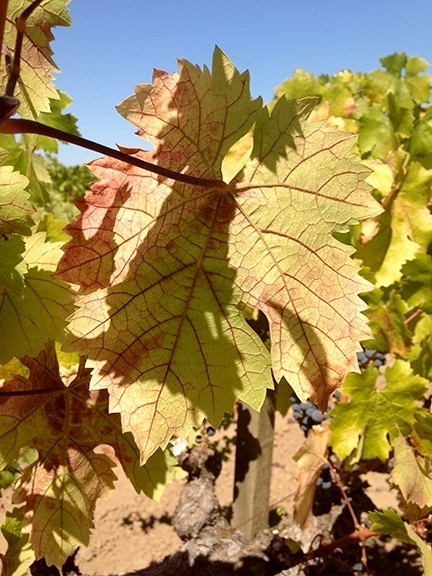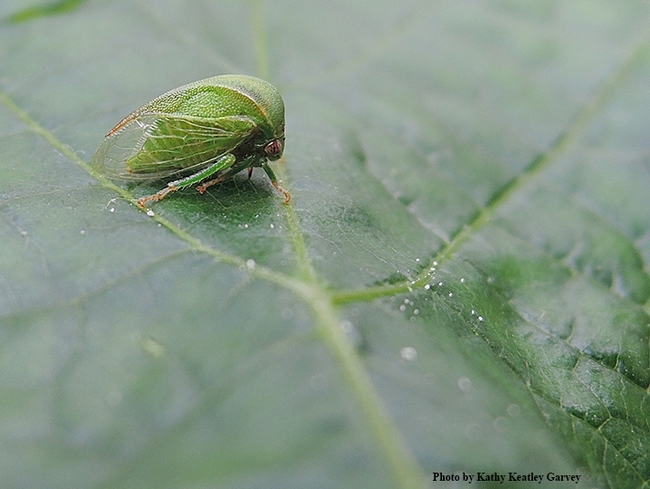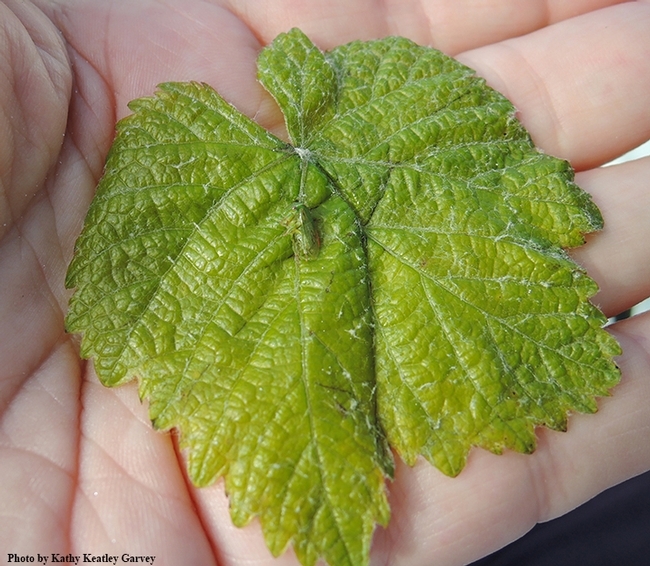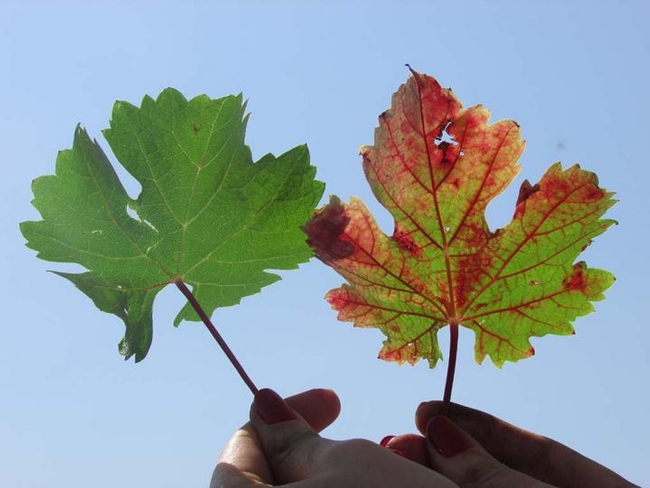
UC Davis integrated pest management (IPM) specialist Frank Zalom distinguished professor, UC Davis Department of Entomology and Nematology, and research biologist Mysore "Sudhi" Sudarshana of the USDA's Agriculture Research Services (ARS), based in the UC Davis Department of Plant Pathology, directed the eye-opening research.
Fast forward to today: It's just been announced that U.S. Department of Agriculture's National Institute of Food and Agriculture (USDA-NIFA) has awarded a four-year, $3 million grant, "Ecobiology, Impact, and Management of Grapevine Red Blotch Virus and Its Vector(s) in California and Oregon Vineyards," to UC Davis scientists.
The grapevine red blotch virus is an urgent problem that threatens the $162 billion grape industry.
Now UC Davis scientists, in collaboration with UC Berkeley and Oregon State University researchers, are targeting the virus and its vector or vectors.
“Red blotch is a huge new problem for the grape industry, and this is the first large government grant to study it,” said project director Anita Oberholster, Cooperative Extension specialist in the UC Davis Department of Viticulture and Enology. “We will be working in partnership to take the first steps to understand the disease and develop sustainable management practices to support the grape industry.”

First identified in 2012, the disease affects grapevines of all varieties and is internationally present. Symptoms typically include red blotches on the leaves of red varieties, and pale green or pale yellow blotches on white varieties.

"Although our knowledge of red blotch virus and its spread has improved in the short period of time since it was first discovered, there are still many questions to be answered in order to understand its epidemiology and develop an effective management strategy," Zalom said. "For example, we need to understand mechanisms for how the virus affects grapevines, and if there are additional vectors."
In their successful grant application, the scientists wrote that grapevine red blotch virus (GRBV) is a prominent disease found in the majority of grape growing regions in California and Oregon. "The grape industry currently lacks best practices for detecting and preventing spread of GRBV within and among vineyards. The discovery of S. festinus as a vector of GRBV significantly increased the possibility of better understanding the epidemiology of GRBD and ultimately its management. However, GRBD spread also occurs in vineyards where S. festinus has not been found. Therefore, information on potential additional vector species in these regions is paramount."
"Replanted vineyards in California and Oregon have experienced reinfections and a better understanding on the prevalence of GRBV and assessment of risk factors are needed," they wrote. "Proposed research will address knowledge gaps involving the epidemiology of the virus as driven by studies on its vectors and determining how the disease affects grapevine performance and grape quality. The economic impact of GRBV infection on producers and nurseries will also be determined. Sustainable GRBV management strategies developed from the project will be implemented to enhance economic and social impacts and to reduce the impact on environment. This project brings together researchers, extension specialists and stakeholders from CA and OR to help solve a significant new problem facing this valuable specialty crops industry. Outreach activities will be extended to the other states and can thus impact the grape industry in the country."
(UC Davis News Service contributed to this piece)
Attached Images:

The three-cornered alfalfa leaf hopper, Spissistilus festinus, transmits the grapevine red blotch virus. (Photo by Kathy Keatley Garvey)

A three-cornered alfalfa leaf hopper, Spissistilus festinus, on a grape leaf. (Photo by Kathy Keatley Garvey)

The leaf on the right has grapevine red blotch virus. (Photo by Raul Girardelo, UC Davis)